MILIEU
April 16 — May 22, 2022
Édouard Montassut, Paris
“Is aggressive broadcasting what it once was?” asks Slinky, one of the characters in Ivan Cheng’s new video The Waves, a 48-minute-long montage of one take shots of monologues recorded during two live performances in Marseille this spring. The Waves demands ongoing suspensions of disbelief - not least Cheng’s performance of twins who appear in bursts of monologues in spaces that are recognisable, nameless, or named Monaco. Slinky runs a pirate radio station but becomes disillusioned by the changing ethics surrounding its monetization and the lack of a geographically defined or tangible audience in the face of the internet’s reshaping of the medium. His twin Fritzi is an “extremely observational” aspiring actor capable of instantly switching between accents and works as a judge of fireworks. The cast expands to another facilitator in entertainment as service industry: the famous German industrial designer Dieter Rams is Fritzi’s godfather in Y2K boots and sunglasses, played by Myriam Mokdes, the director of Voiture 14. Rams recites his 10 commandments of good design and casually brags about driving a Porsche 911.
A subtle and at times hysterical queer humour permeates the ongoing flow of phrases in these monologues and the self-righteousness of the portrayed figures. Slinky’s abandonment of pirate radio exemplifies how the very idea of an ‘underground’ has been historicised and replaced by digital networks, not unlike Dieter Rams’s electronic gadgets and the medium radio’s bygone role in transmitting language, information and advertisement. Are ‘waves’ still a useful metaphor for paradigm shifts in feminism or musical genres, now that any content can be streamed online from any location? Perhaps the term has always failed to appropriately describe collective shifts in political views or artistic expression, as illustrated by its resurgence as a euphemism for the gentrification of cafés.
The non-linear narrative and the sheer amount of language in The Waves draw attention to the construction of the gaze, the sound effects, and the intentionally shallow characters’ way of speaking. Slinky, Fritzi and Dieter perform different forms of connoisseurship of milieus such as the ‘underground’, posh and regional accents, functional and tasteful product design, fireworks, or ethically sourced gourmet coffee. Like in a one-person radio play, Ivan Cheng’s voice emerges as the real protagonist and as a continuous ambient background noise, ranging from the deep-voiced mansplaining by a barista in a gladiator apron with printed-on muscles (“Every lungo draw is a streaming contest under the moon, man.”) to the high camp of ab-fab female Dieter Rams, dubbed by Cheng in an exaggerated German accent.
With Cheng’s live performances structured as fast moving guerrilla video shoots, audience members are wrangled into extras with dubious consent, appearing in sequences and contributing to the soundtrack of The Waves. The signifier of authenticity and liveness is rendered functional and ornamental. In the digital montage, the transitions, context, and banter that ease the live witness in and out of the estrangement of recitation are cut, substituted with post-production, additional footage and sound effects.
The gatekeeping of digital and analogue networks is addressed differently in a sculpture produced in collaboration with Thorben Gröbel: a bespoke cookie tower on a marble base from which emerge hand-hammered stainless steel cups with little lids, all easily dismantled into parts. The tower resembles a utopian residential building which hosts various cookies of unknown origins. Evoking the equally mysterious digital cookies in internet browsers, the tower could be interpreted as a reversal of Apple’s translation of Dieter Rams’s design aesthetic into digital interfaces. Much like their virtual counterpart, this assemblage of baked goods remains cryptic about its function and the economies and relations that it represents.
The opaque significance of avatars for cookie providers echoes the character writing and hooks for the audience in the performance. Whether the tower proposes a collaborative portrait of Cheng’s own milieu, or offers a platform ready for piracy and hijack, the offer of cookies signal his approach to the complexity of hosting, storage, access, and legibility – eat now, process later.
- Raoul Klooker
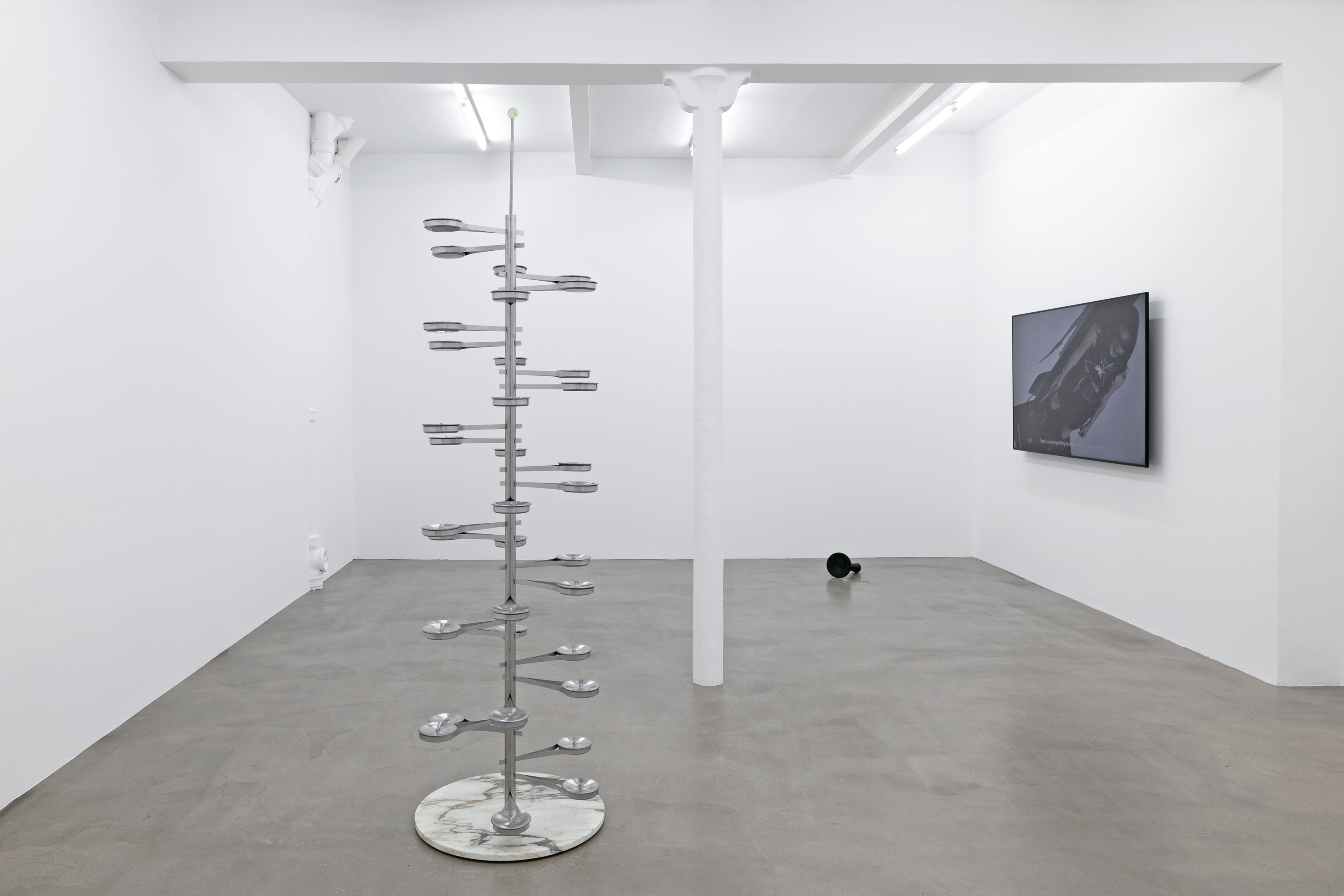

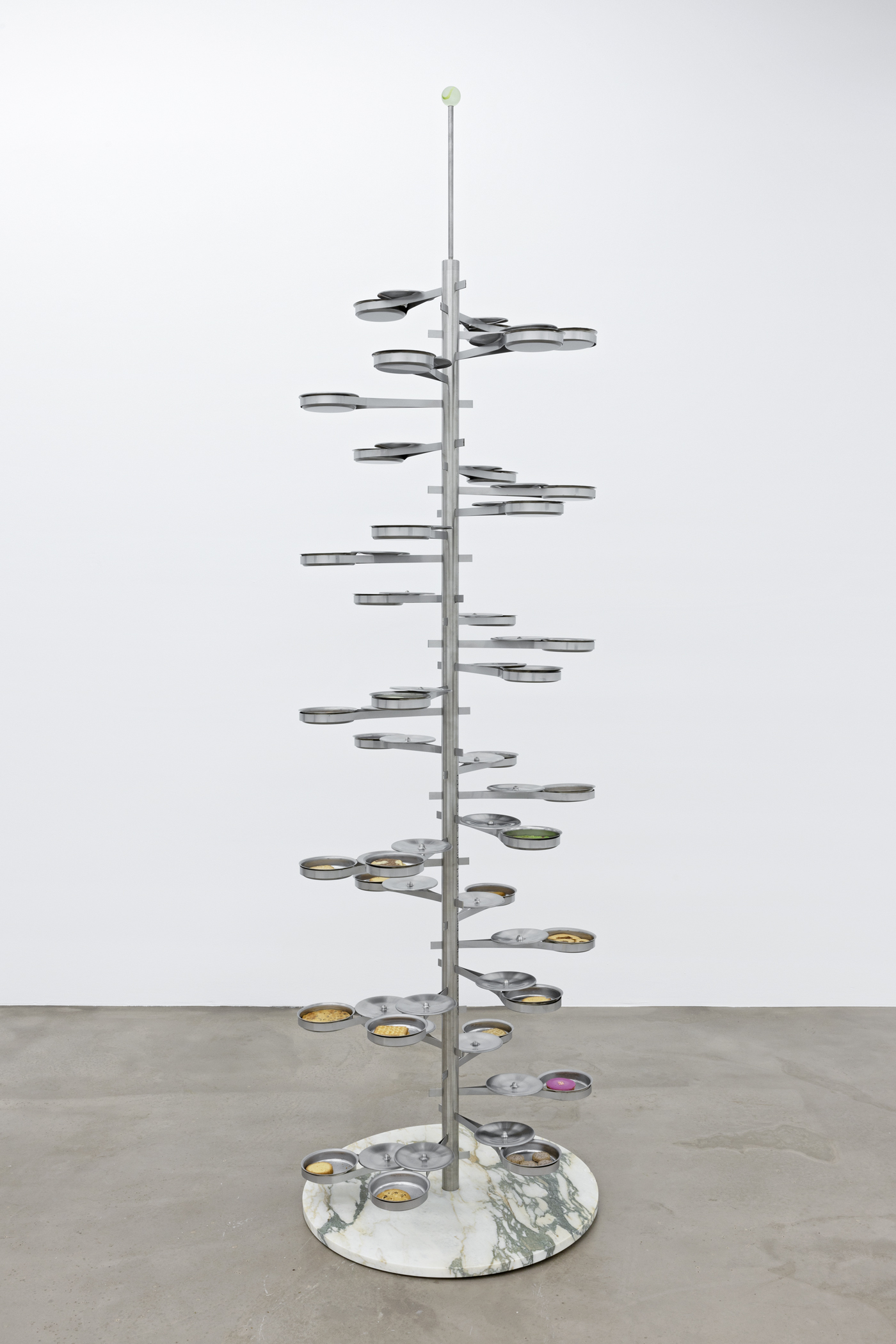
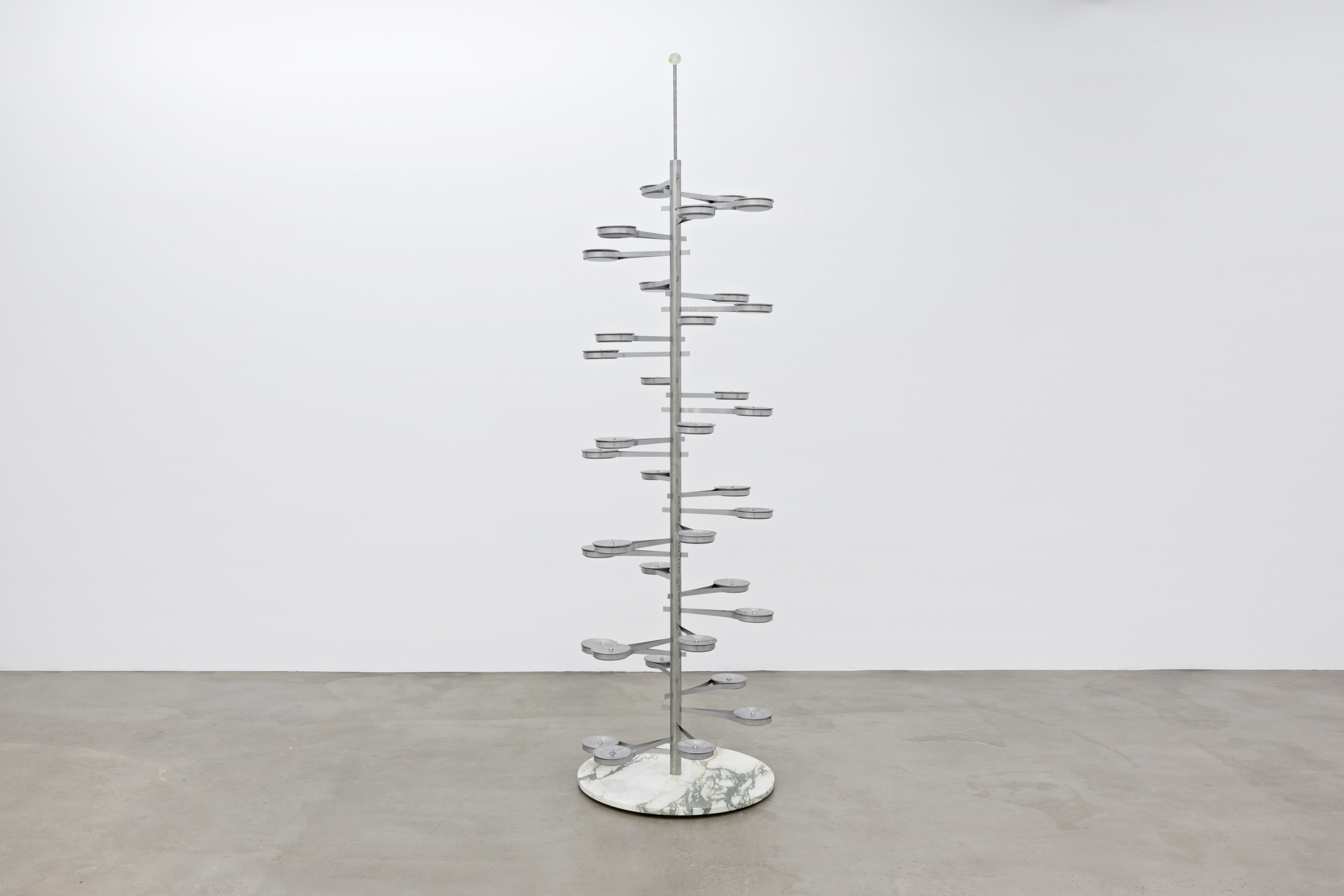
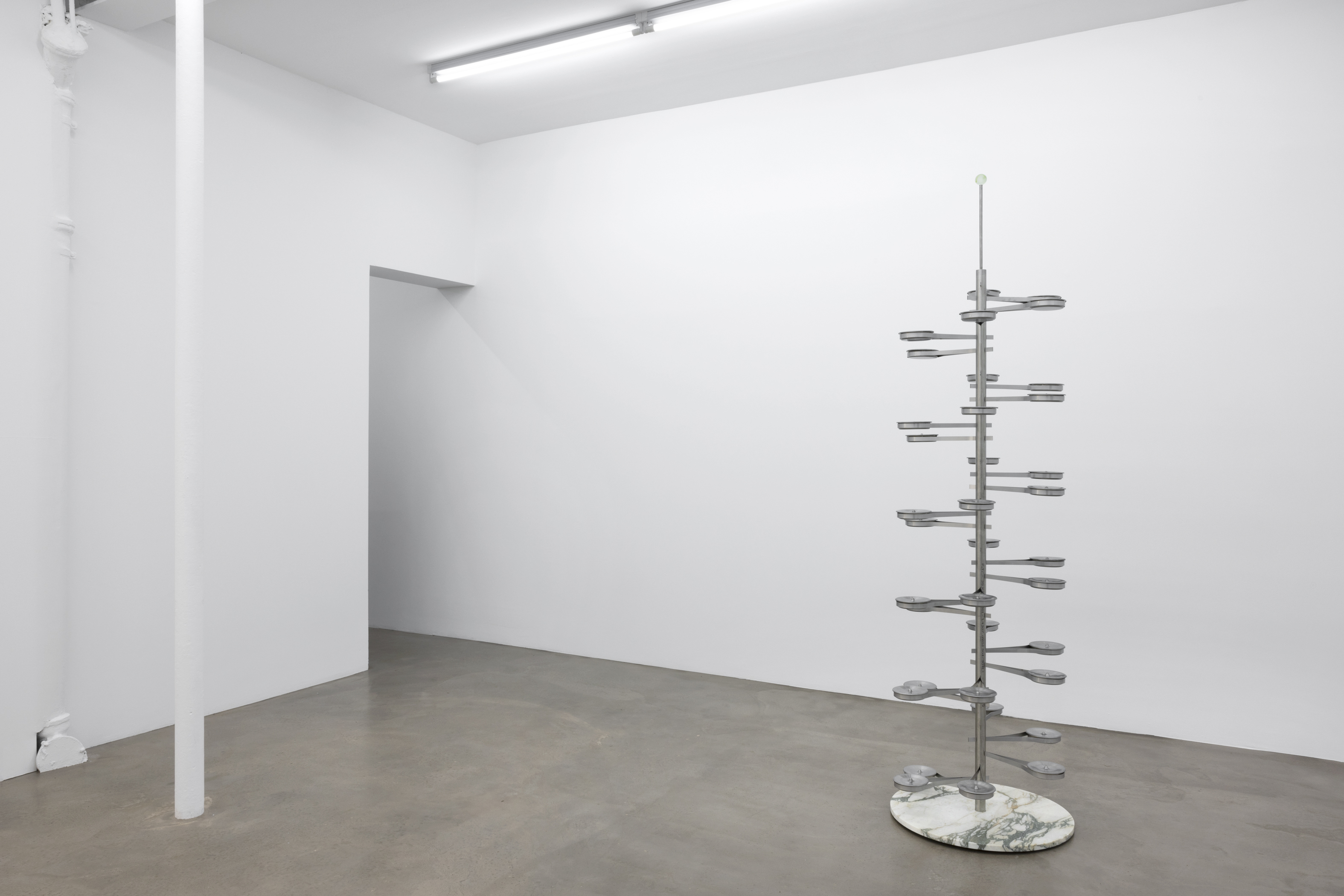
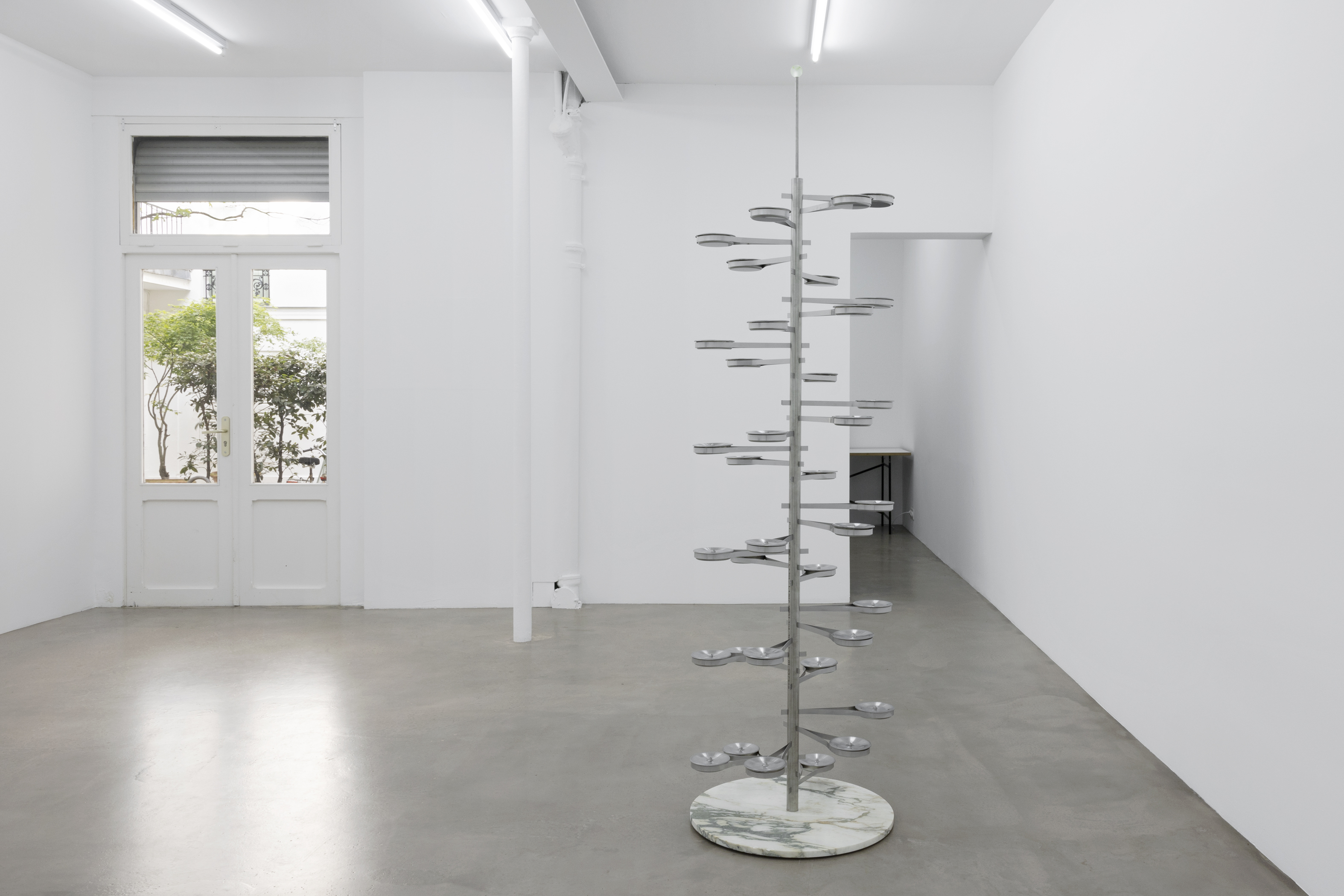
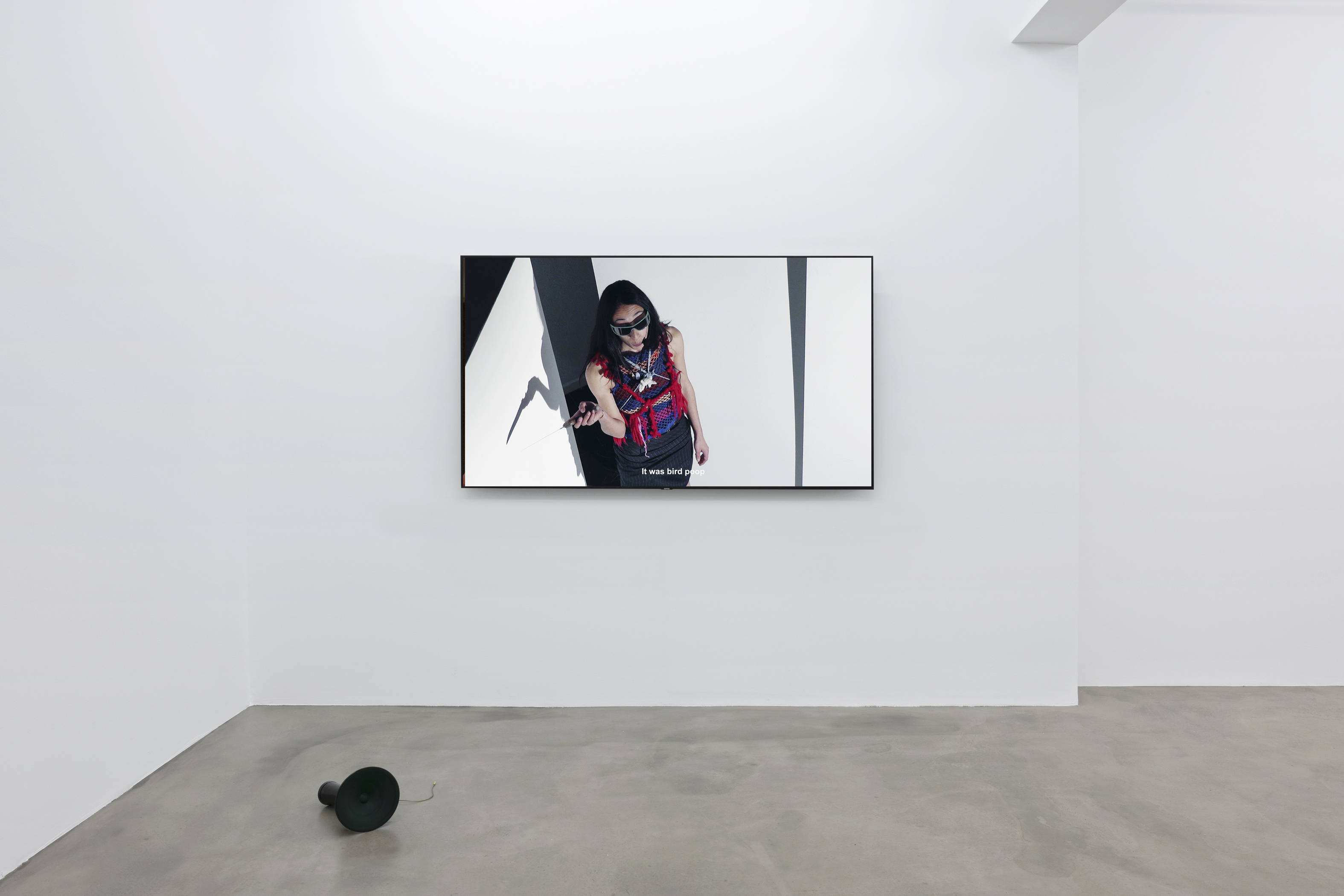
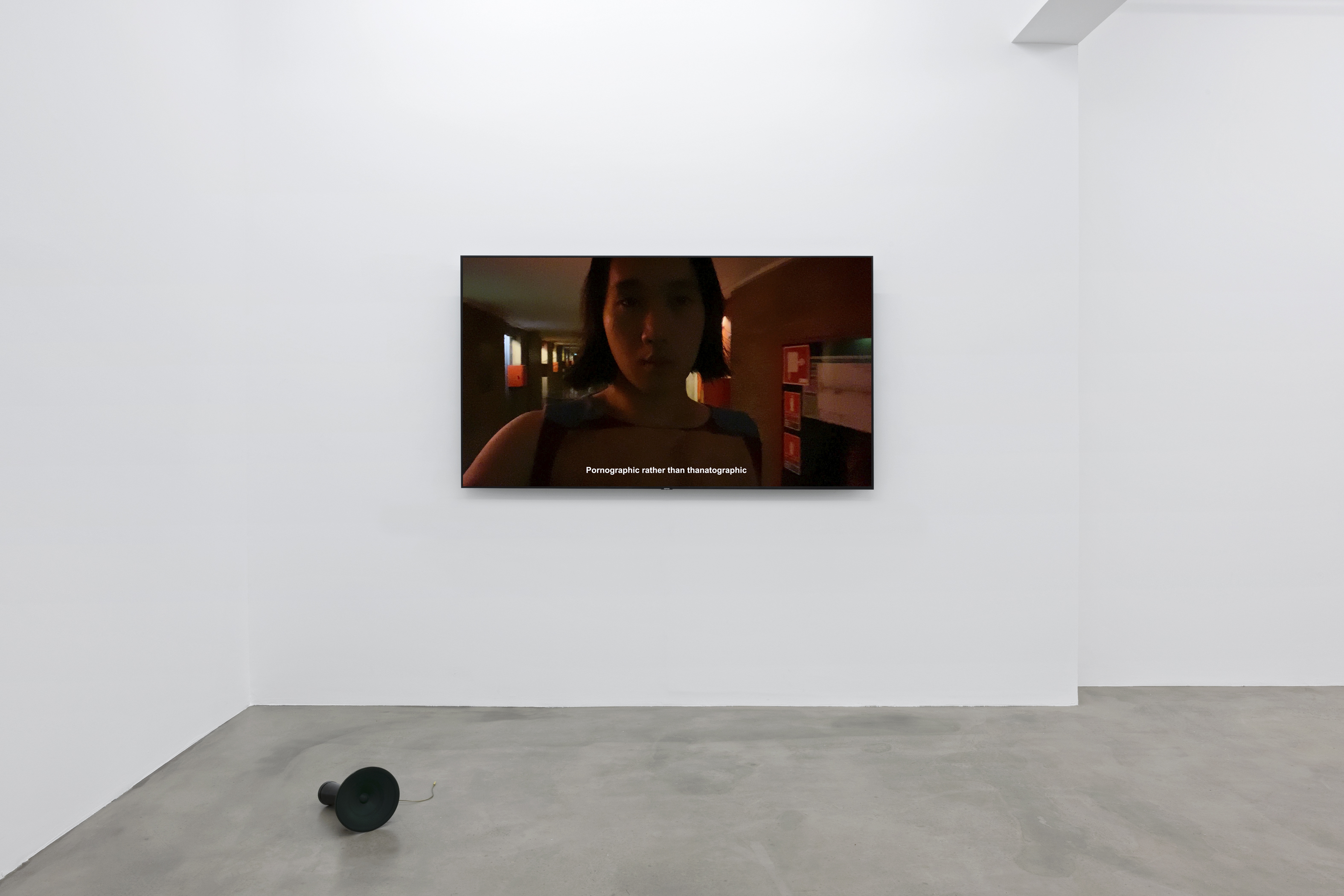
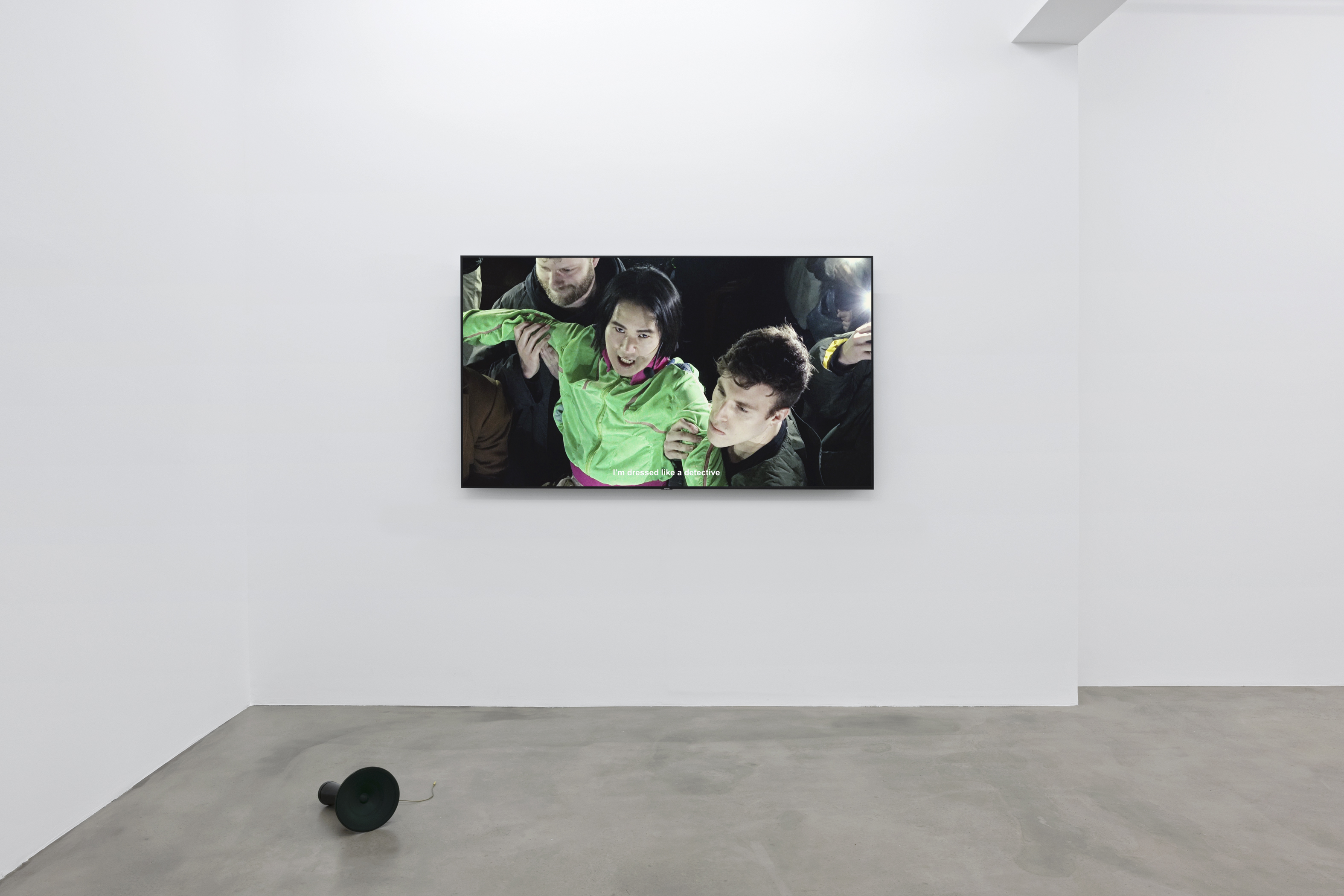
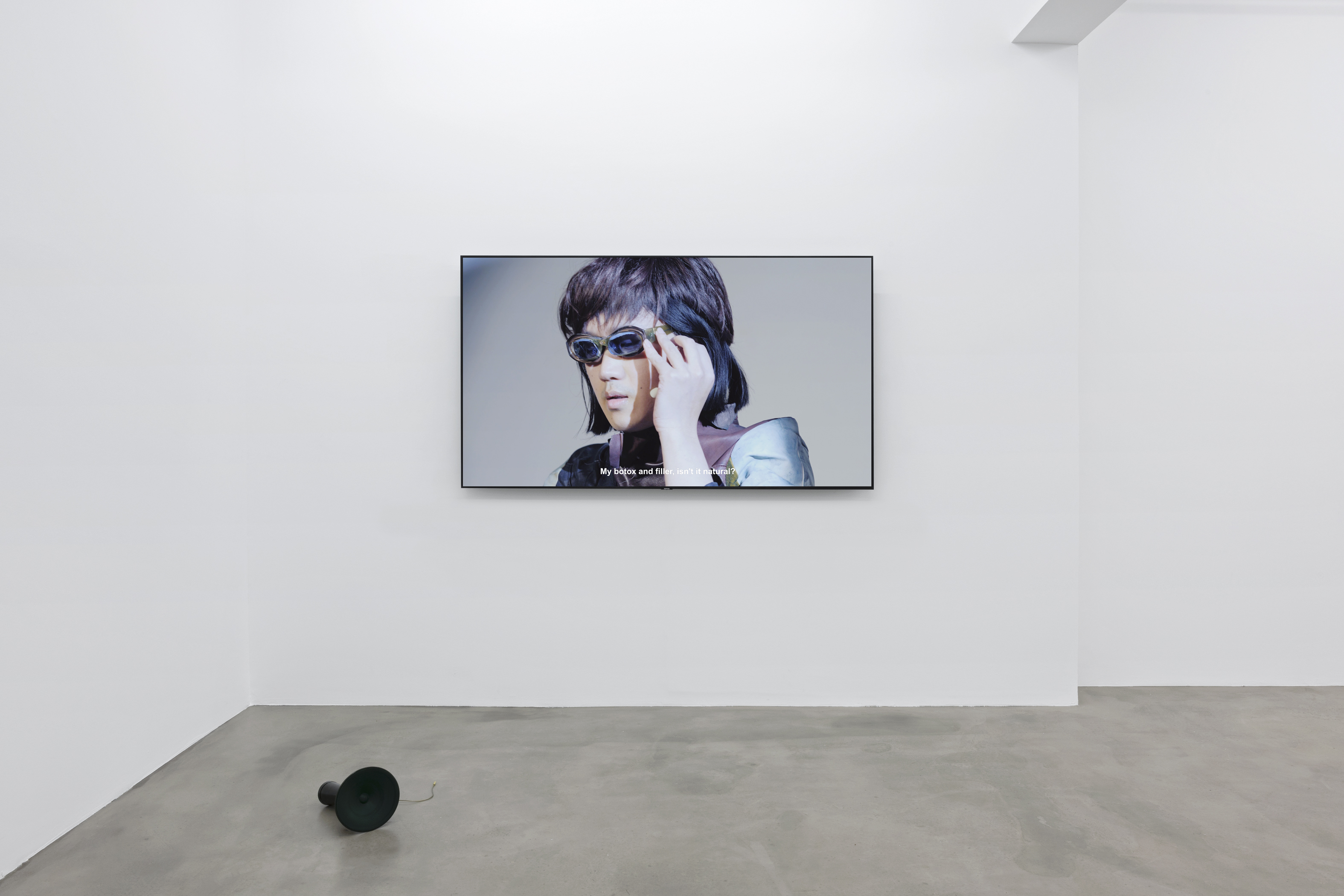
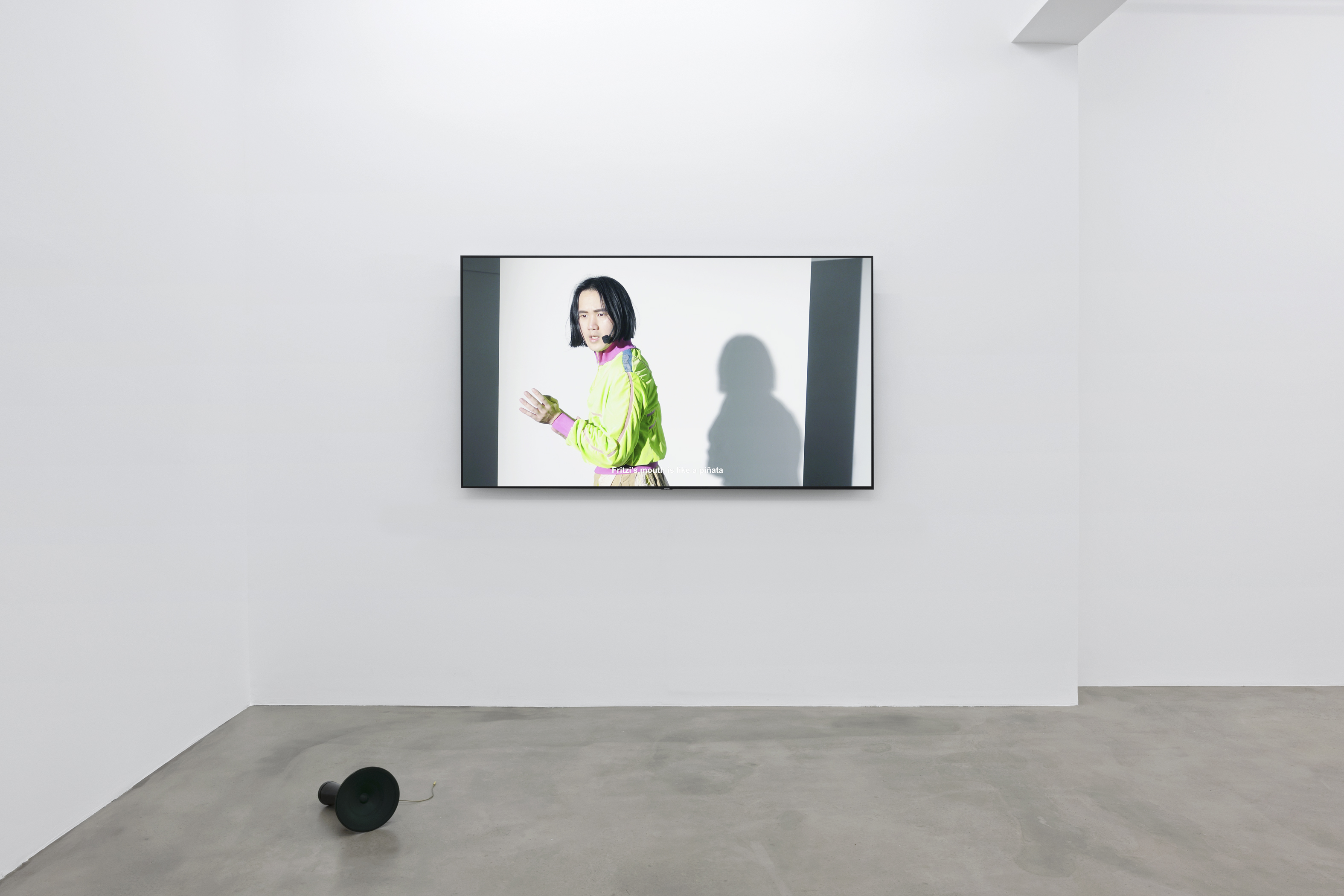
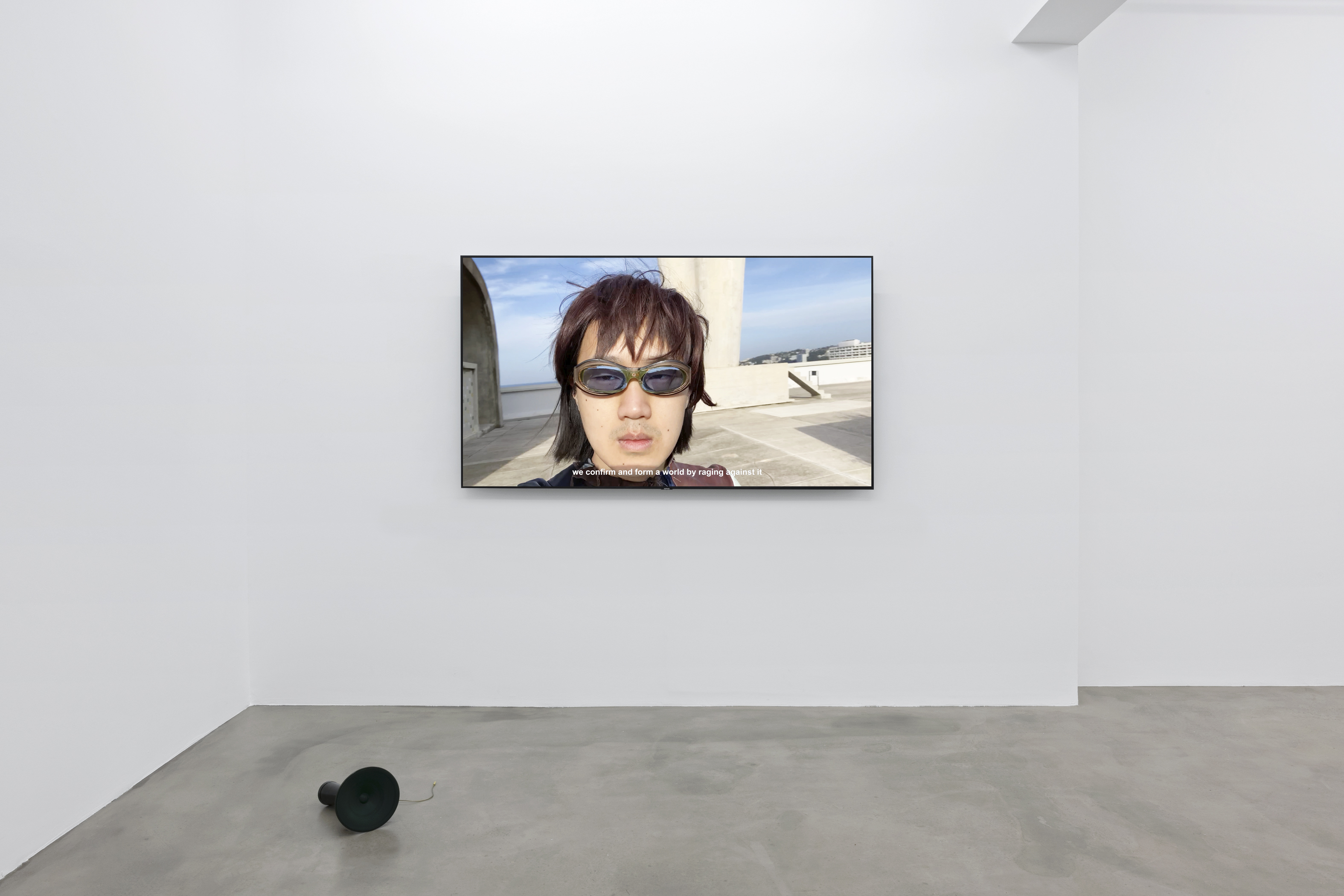
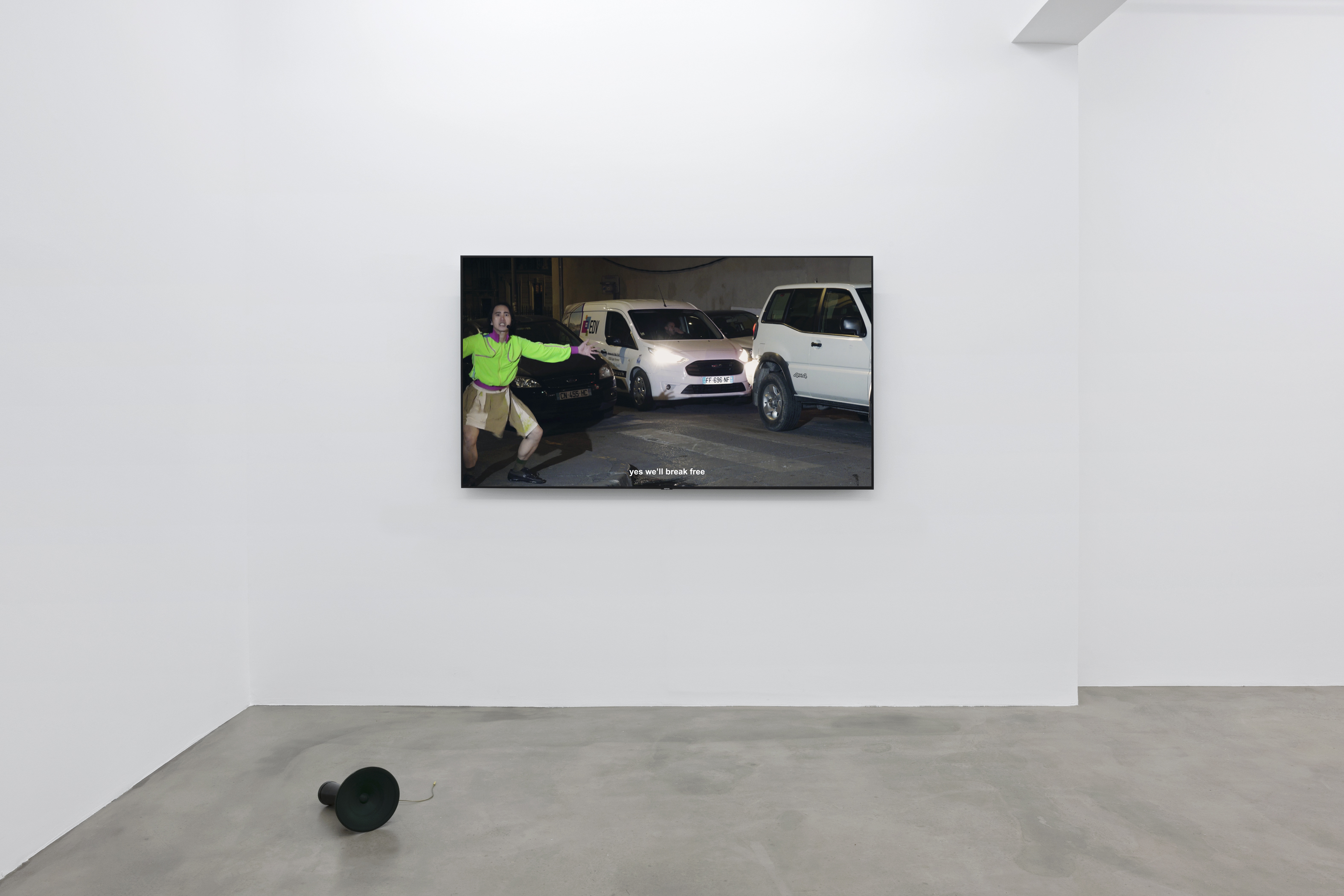
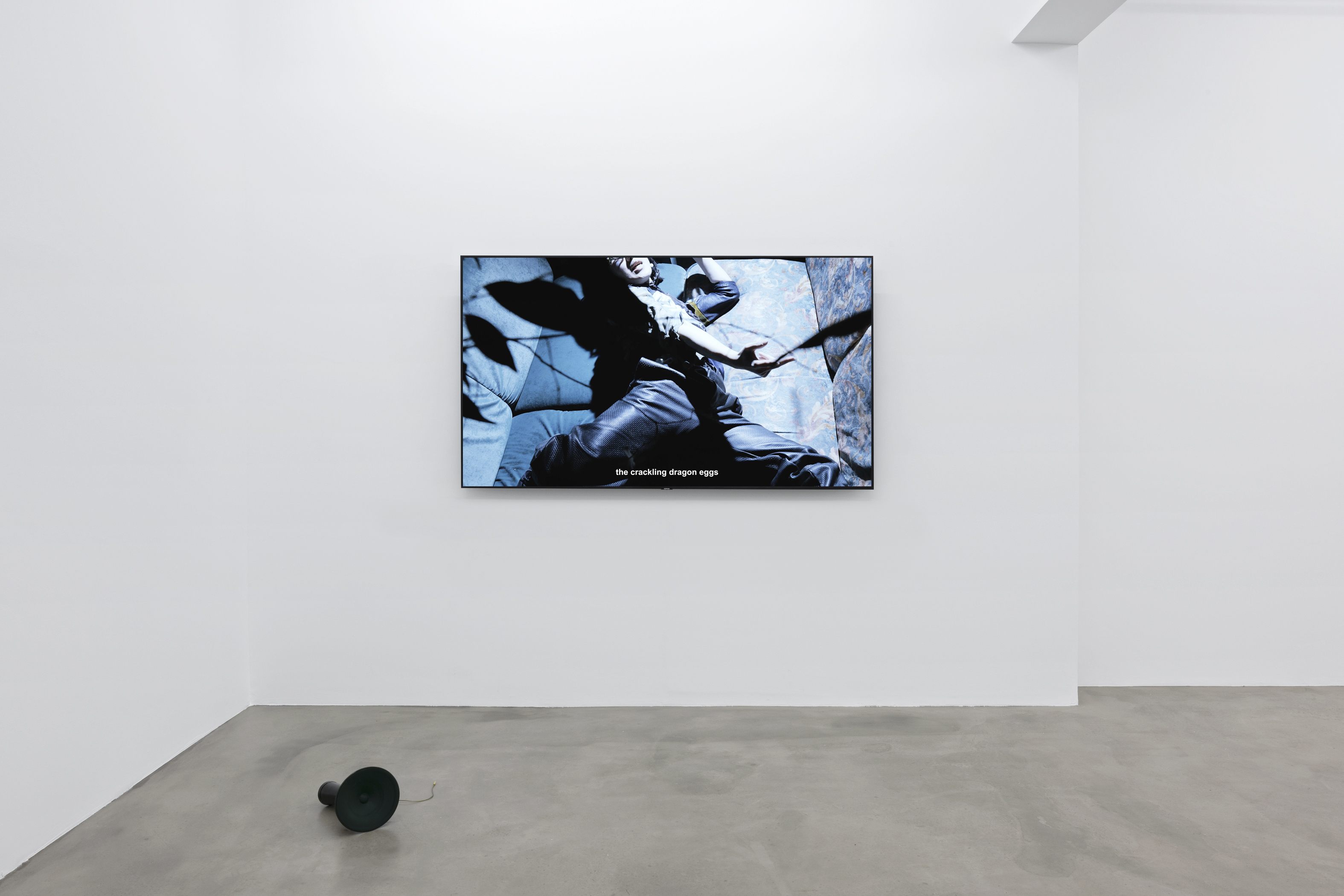

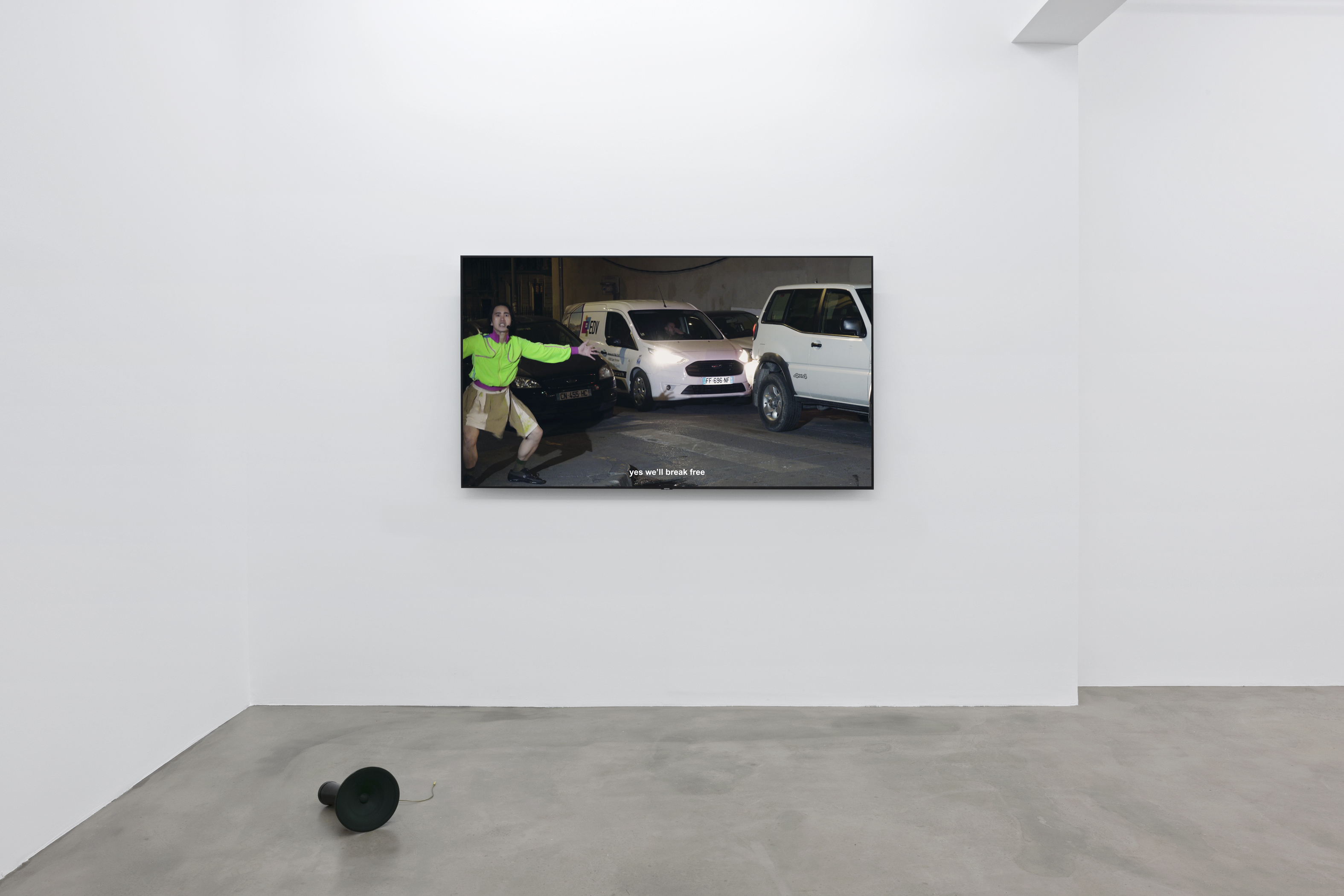
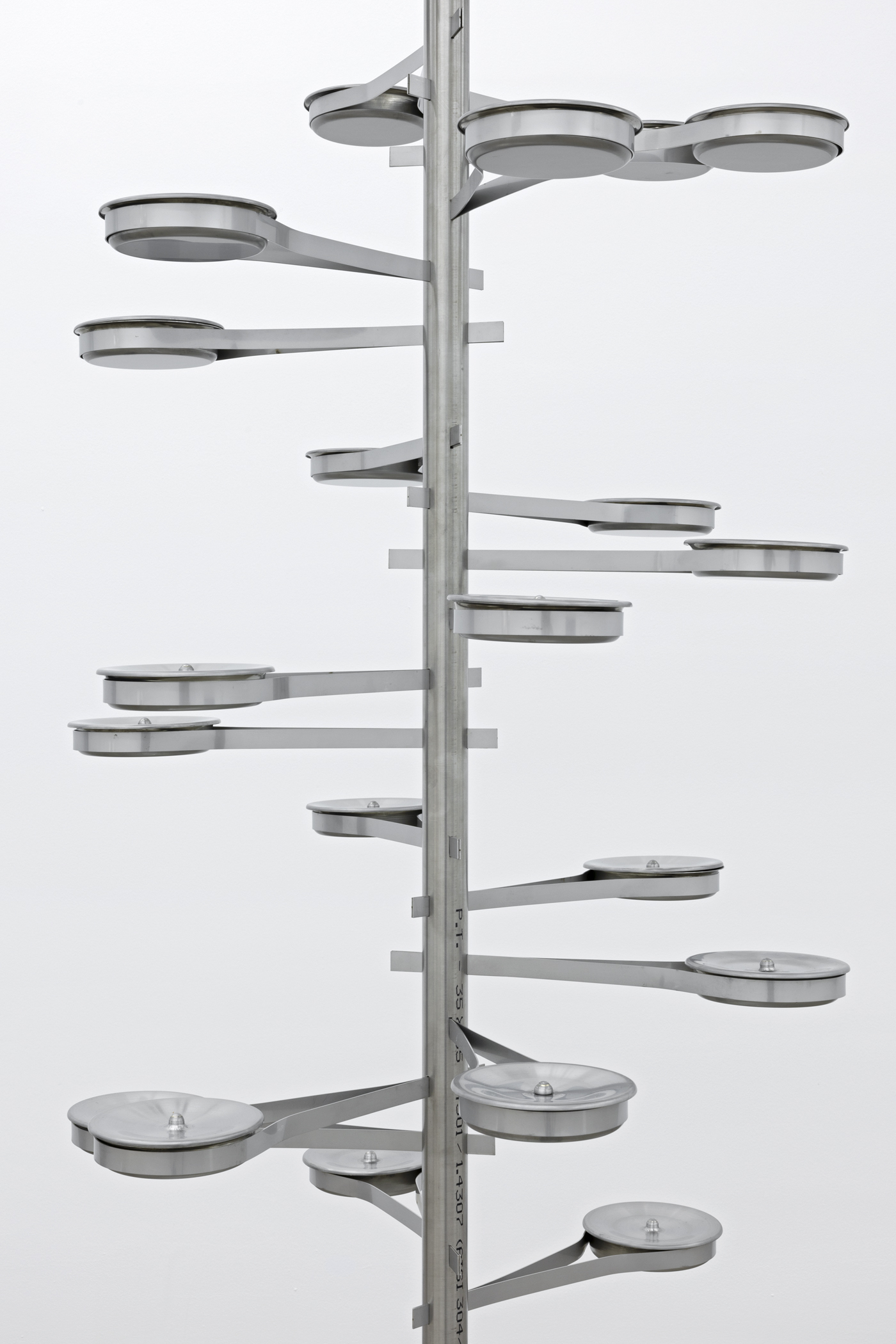
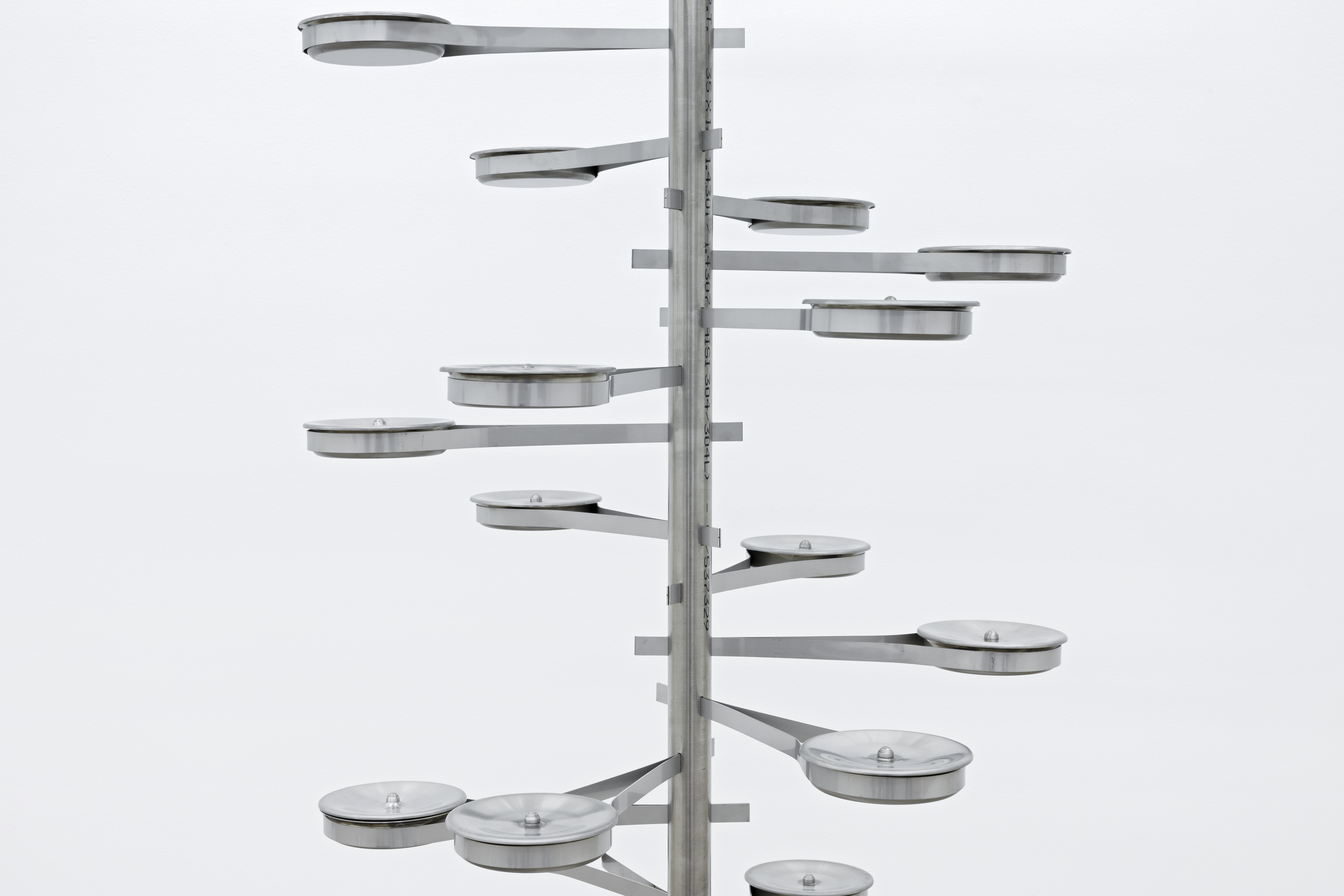
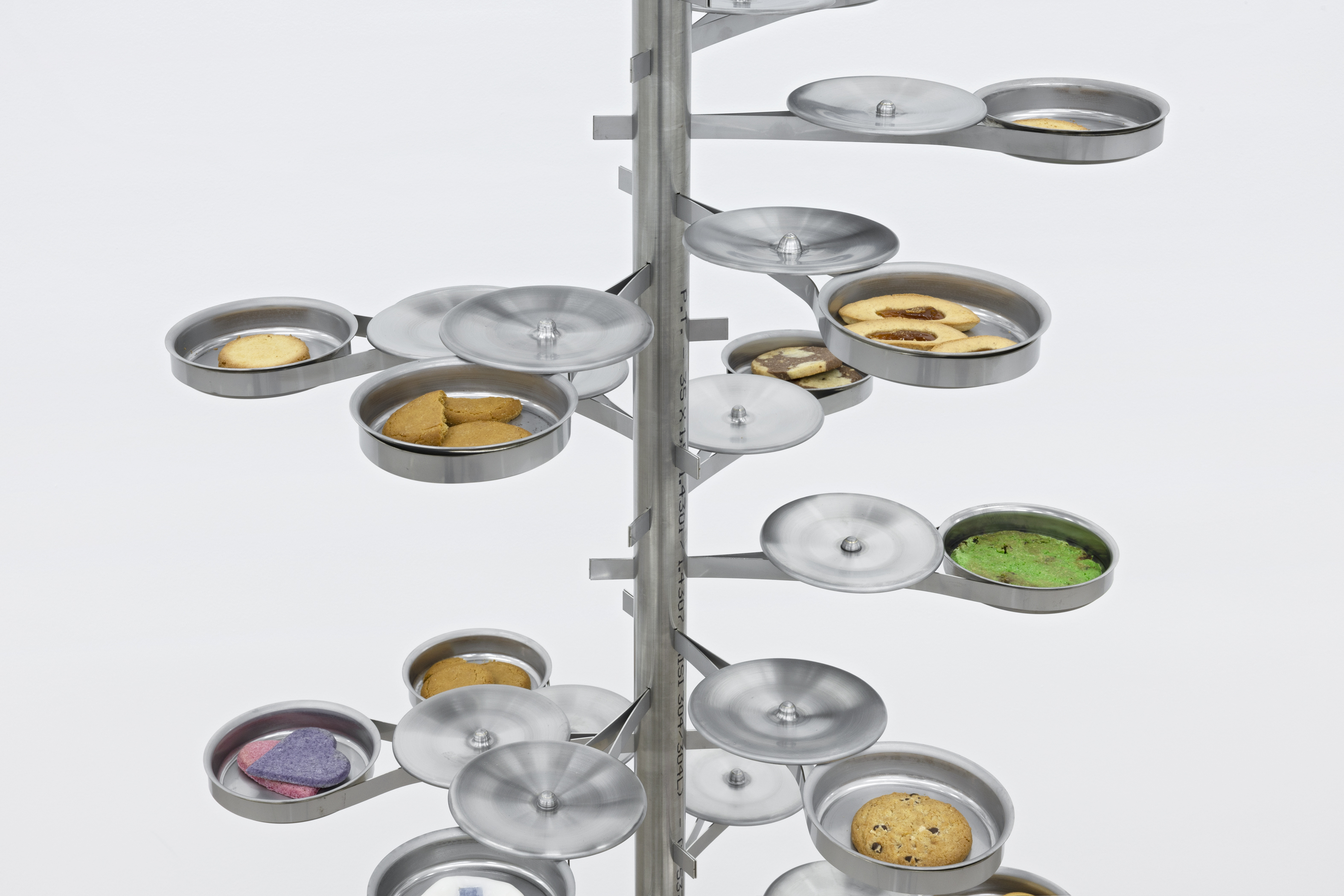
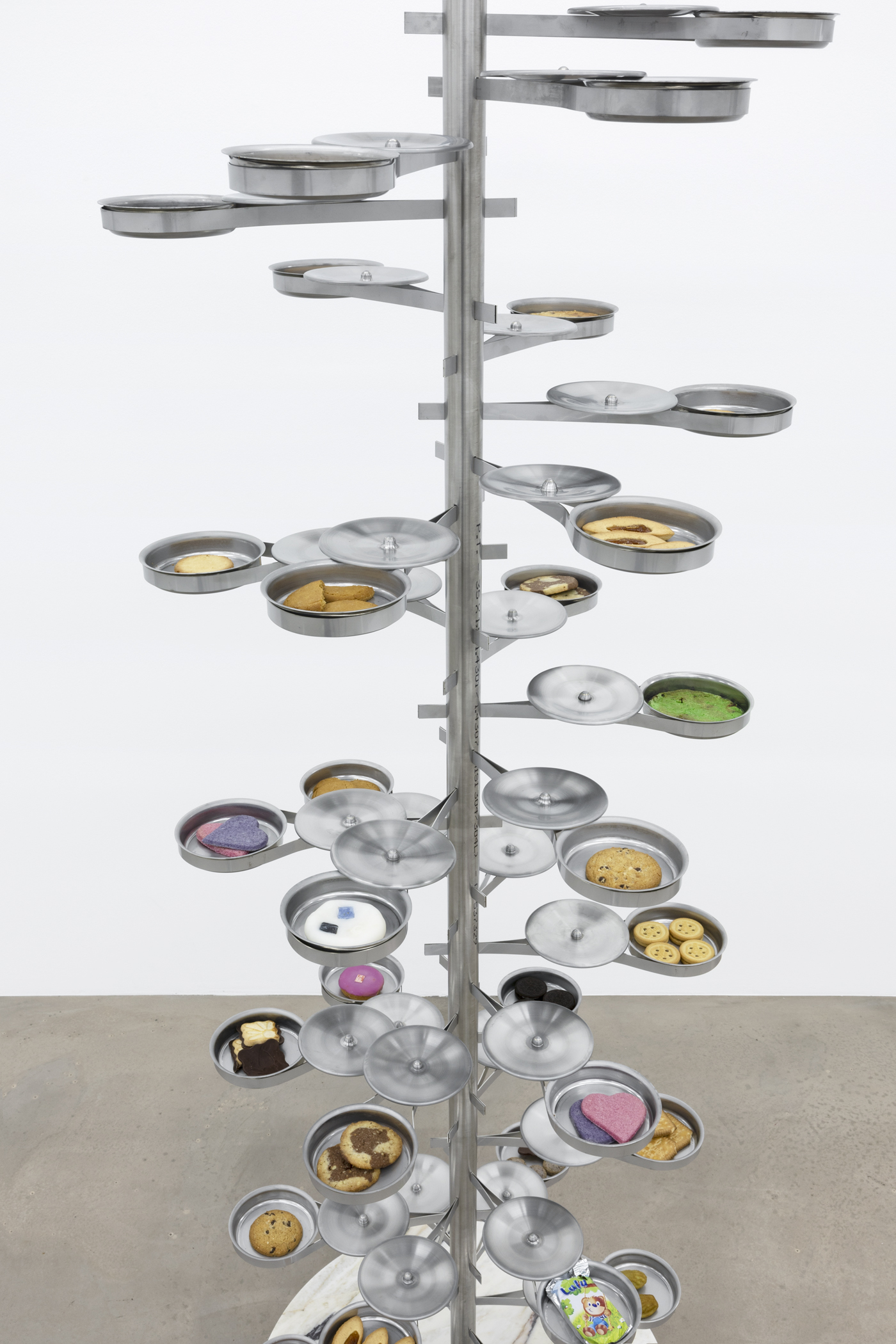
Ivan Cheng
Cookie Tower (NY), 2022
Calacatta verde, stainless steel, glass marble
223 x 60 cm (88 x 23 1/2 in)
Design: Thorben Gröbel
Production: Maxime Prananto, Thomas Rübsamen
Ivan Cheng
The Waves, 2022
4K video, 48:05 min.